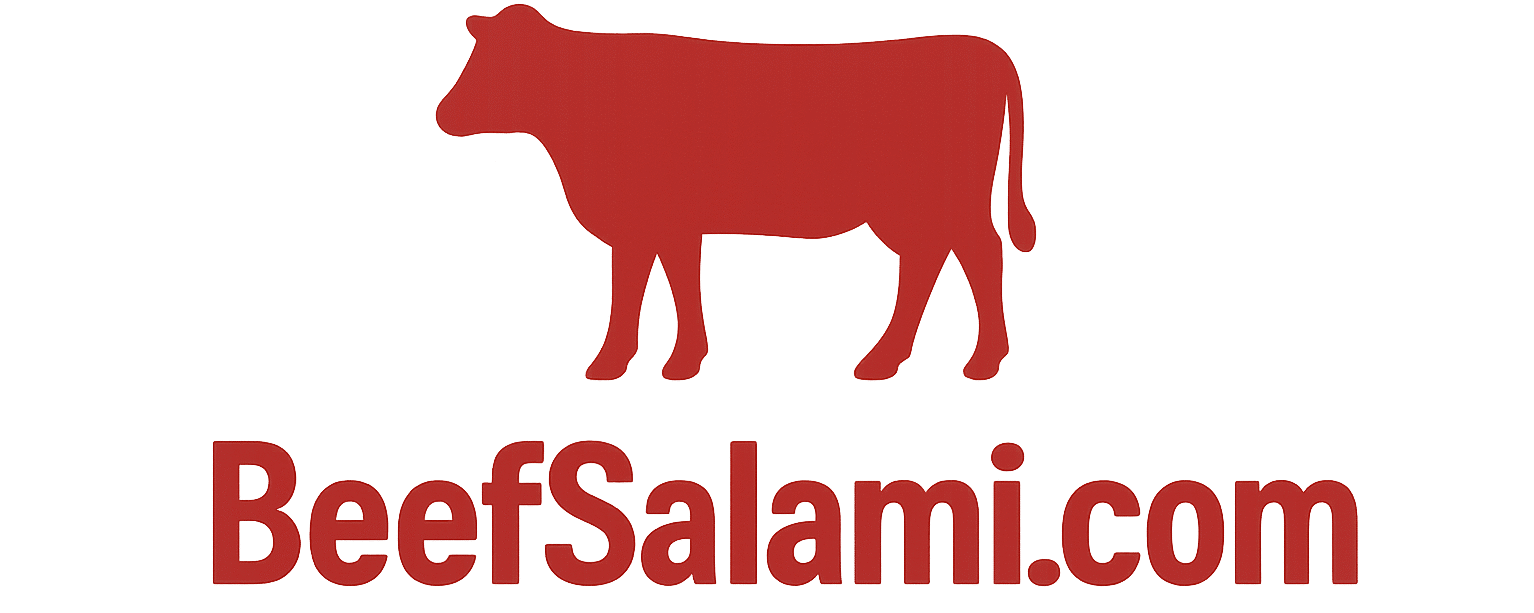Best Beef Cuts for Easter: A Complete Holiday Guide 2025
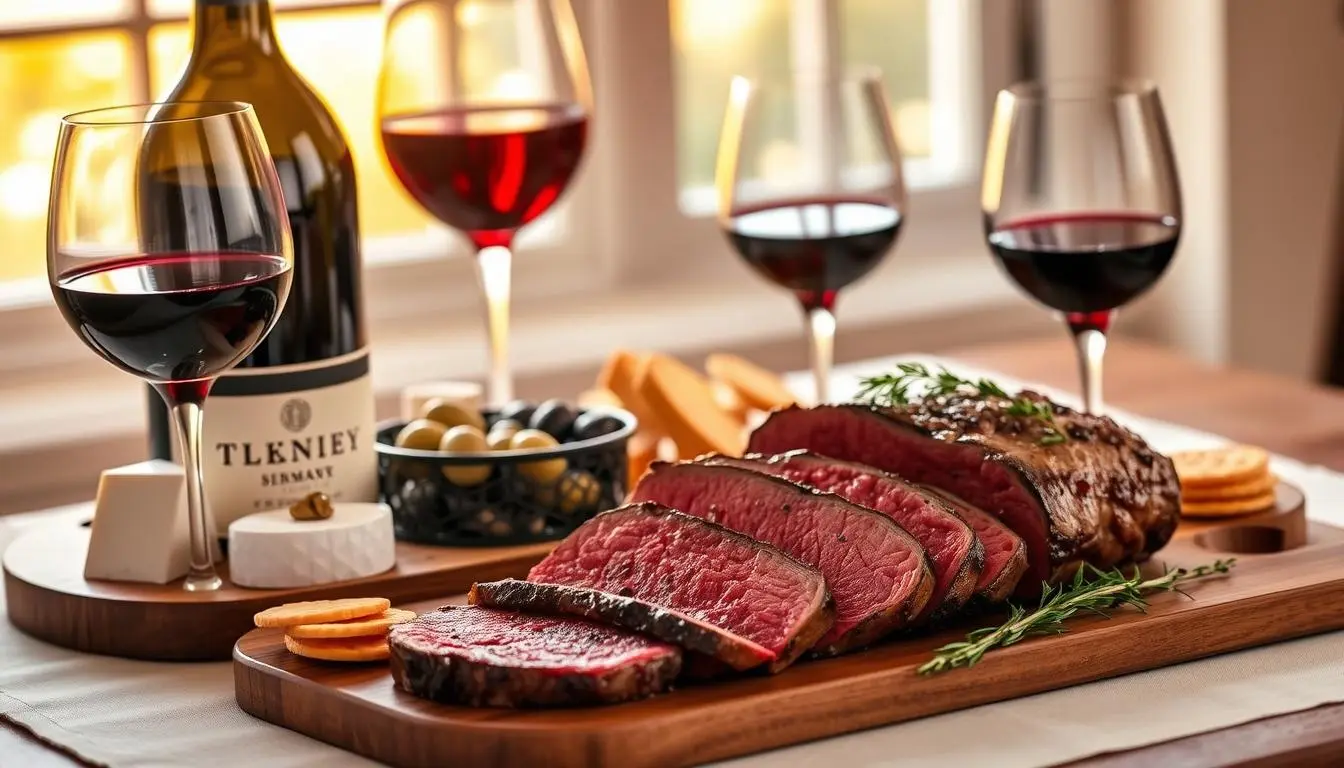
Best Beef Cuts for Easter: A Complete Holiday Guide 2025
Table of Contents
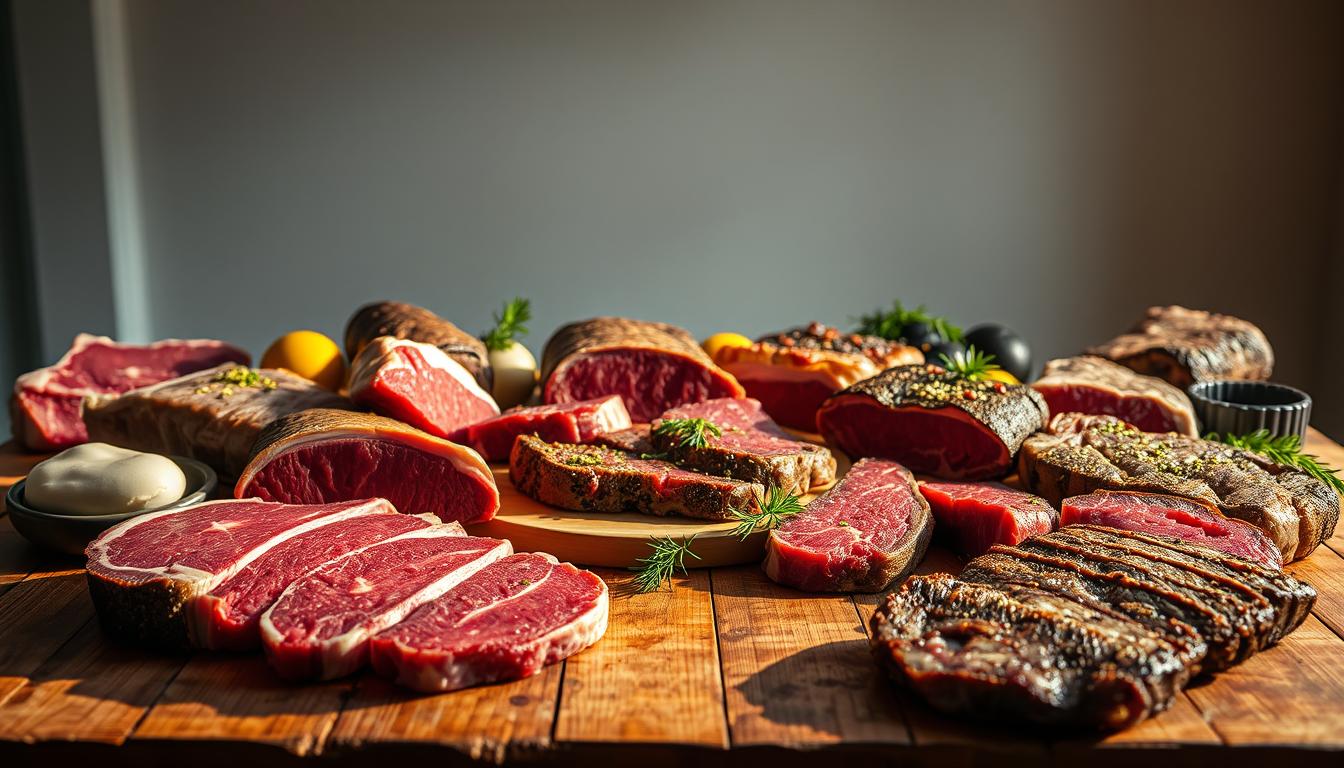
Easter is coming, and we can’t wait to share a delicious meal together. A perfectly cooked beef roast is often the highlight of our gatherings. It turns a regular dinner into a special memory.
Whether you’re an experienced cook or hosting Easter for the first time, picking the right beef is key. This year, beefsalami.com has put together a guide for you. It covers prime rib roast and other top beef choices. Your Easter table will shine with a centerpiece that everyone will remember.
We’ll look at both classic and new beef options. This will help you create a holiday meal that’s both traditional and modern. It’s all about making your Easter dinner unforgettable.
Ingredients :
- 1 (4 to 5-pound) beef rib roast (bone-in or boneless)
- 2 tablespoons olive oil
- 2 tablespoons kosher salt
- 1 tablespoon black pepper
- 1 tablespoon garlic powder
- 1 tablespoon fresh rosemary, finely chopped
- 1 tablespoon fresh thyme leaves
- 1 tablespoon onion powder
Directions:
- Preheat your oven to 450°F.
- Pat the beef rib roast dry with paper towels. This helps the crust stick better and promotes even browning.
- In a small bowl, mix the olive oil, salt, black pepper, garlic powder, rosemary, thyme, and onion powder until it forms a paste.
- Rub the herb mixture evenly over the entire surface of the roast.
- Place the roast fat-side up in a roasting pan with a rack. This allows heat to circulate evenly around the meat.
- Roast in the oven at 450°F for 15 minutes to develop a crust.
- Reduce the oven temperature to 325°F and continue cooking for about 1 hour and 45 minutes, or until an internal thermometer reads 135°F for medium-rare.
- Remove the roast from the oven and cover loosely with foil. Let it rest for at least 20 minutes before slicing to allow the juices to redistribute.
- Slice the roast against the grain and serve with your favorite Easter side dishes.
Prep Time: 15 minutes
Cooking Time: 2 hours
Servings: 8
Calories: 540
Protein: 48g
Fat: 38g
Carbs: 1g
Key Takeaways
- Prime rib roast remains the ultimate Easter beef centerpiece
- Selecting quality beef cuts determines meal success
- Understanding cooking techniques is crucial for perfect results
- Family traditions play a significant role in meat selection
- Budget and portion size matter when choosing Easter beef
Understanding Traditional Easter Meat Selections
Easter dining traditions are filled with cultural heritage and cooking practices. The meats chosen for Easter are more than just food. They represent family traditions and local customs.
In the United States, families have their own ways of preparing Easter meals. The main protein chosen often depends on family history, local influences, and personal taste.
Historical Significance of Easter Meats
Easter meats have always carried symbolic meanings. Different cultures pick certain meats to celebrate renewal and joy:
- Leg of lamb is a favorite in many European and Mediterranean homes.
- Ham is a big hit in American Easter celebrations.
- Lamb chops are a modern choice, loved for their taste and ease of cooking.
Modern Preferences in Easter Dining
Today’s Easter meals are changing. While old favorites like lamb and ham are still loved, people are trying new meats too. The leg of lamb is still a favorite, loved for its taste and elegance.
Cultural Variations in Easter Meat Choices
Easter meat choices vary a lot around the world. Some families go for ham, while others choose lamb chops or other meats. These choices show off personal tastes and cultural traditions.
The beauty of Easter dining lies in its ability to blend tradition with personal innovation.
Prime Rib Roast: The Easter Showstopper
The prime rib roast is the star of Easter dinner. It’s known for its tenderness, rich flavor, and luxurious feel. It turns your holiday meal into a memorable event.
Beef experts at beefsalami.com say to look for a prime rib roast with:
- Consistent marbling throughout the meat
- Bright red color with white fat streaks
- Minimum weight of 4-5 pounds for family gatherings
- USDA Prime or Choice grade for best quality
To prepare a prime rib roast, start by letting it come to room temperature. This helps it cook evenly. Seasoning is key. Use kosher salt, black pepper, and herbs like rosemary and thyme to boost the flavor.
When cooking, keep an eye on the temperature. Aim for:
- Rare: 125°F internal temperature
- Medium-rare: 135°F
- Medium: 145°F
After cooking, let the roast rest for 15-20 minutes. This makes sure each slice is juicy and full of flavor. Your guests will be amazed by your prime rib.
Selecting the Perfect Beef Cuts for Easter Celebrations
Choosing the right beef for your Easter feast can make it unforgettable. It affects taste, budget, and how much you enjoy your meal.
When planning your Easter meal, knowing about beef cuts is key. Different cuts offer unique flavors and textures. They can make your celebration even better.
Grade Considerations for Easter Beef
USDA beef grades show meat quality. The main grades are:
- Prime: Highest quality with lots of marbling
- Choice: High-quality with some marbling
- Select: Leaner with less fat
Size and Portion Guidelines
Figuring out the right amount of beef tenderloin or spiral-sliced ham is important. Here’s a guide:
- 8 ounces per adult
- 4-6 ounces for kids
- Extra for those who eat a lot
Budget-Friendly Options
You don’t have to spend a lot to enjoy great meat. Here are some affordable choices:
- Chuck roast: Tasty and cheap
- Bottom round: Lean and affordable
- Spiral-sliced ham: A cost-effective protein
Whether you pick a fancy beef tenderloin or a more affordable cut, the right choice makes Easter special.
Beef Tenderloin: Elegant Easter Dining
Beef tenderloin is the top choice for Easter’s main dish. It’s tender and has a mild flavor that will wow your guests. This makes your Easter dinner special.
Beefsalami.com experts say to pick a tenderloin with lots of marbling. This lean cut is great for those who want a fancy meat that’s still delicious.
- Best for 6-8 guests
- Typically weighs 4-5 pounds
- Recommended internal temperature: 135°F for medium-rare
To get the best taste and tenderness from beef tenderloin, follow these steps:
- Let the meat get to room temperature before cooking
- Season it well with kosher salt and black pepper
- Seal the outside for a nice crust
- Roast it in a hot oven at 425°F
| Cooking Method | Estimated Time | Result |
|---|---|---|
| Oven Roasting | 20-25 minutes per pound | Consistent, even cooking |
| Reverse Searing | 45-60 minutes | Perfectly controlled doneness |
To make your beef tenderloin an unforgettable Easter masterpiece, add herb crusts, compound butters, or fancy pan sauces. These will boost its flavor.
Standing Rib Roast: Classic Easter Tradition
The standing rib roast is a key part of Easter, offering a luxurious main course. It makes your holiday meal unforgettable. This beef cut is elegant and tastes rich and succulent.
Choosing a standing rib roast for Easter makes your meal special. This roast has bones, which adds flavor and looks great. It impresses your guests with its presentation.
Preparation Techniques
Preparing a standing rib roast needs careful steps. Start by picking a high-quality cut with good marbling. Your steps should include:
- Trimming excess fat to about 1/4 inch thickness
- Seasoning generously with kosher salt and fresh cracked pepper
- Bringing the meat to room temperature before cooking
- Creating a herb crust for additional flavor
Cooking Temperature Guide
| Doneness | Internal Temperature | Cooking Time (per pound) |
|---|---|---|
| Rare | 125°F | 15-18 minutes |
| Medium Rare | 135°F | 18-20 minutes |
| Medium | 145°F | 20-22 minutes |
Resting and Serving Tips
Let your standing rib roast rest for 15-20 minutes after cooking. This step makes the meat tender and flavorful. It’s better than a rack of lamb for Easter.
Carve the roast against the grain for thick, beautiful slices. Serve with traditional sides for a complete Easter feast.
Easter Recipe Ideas for Different Beef Cuts
Planning your Easter menu is exciting, especially with delicious beef cuts. Whether it’s a traditional family feast or new recipes, the right dish makes the holiday special.
Looking to wow your guests? Here are some tasty beef cut options:
- Prime Rib Roast with Herb Crust
- Beef Tenderloin with Garlic Butter
- Slow-Roasted Beef Brisket
- Crown Roast of Pork (for those wanting an alternative)
Beefsalami.com’s expert chefs share their top tips:
- Choose high-quality meat from trusted butchers
- Allow meat to reach room temperature before cooking
- Use a meat thermometer for precise doneness
- Let the meat rest after cooking to retain juices
Pro tip: Marinating your beef cuts can enhance flavor and tenderness, making your Easter meal truly spectacular.
“The secret to a perfect Easter meal is selecting the right cut and preparing it with love and care.” – Chef Michael Roberts
Feeling adventurous? Mix traditional beef cuts with unique preparations. This creates a memorable dining experience your family will love for years.
Mastering Easter Beef Preparation Methods
Preparing the perfect Easter meat needs skill and the right techniques. Whether it’s a classic beef roast or something new like lamb shoulder or pork loin roast, knowing how to prepare it can make your holiday meal unforgettable.
Starting with the basics of cooking and adding flavor is key. Your approach can turn an ordinary cut into a memorable centerpiece for your Easter celebration.
Marination Techniques
Marinating meat is an art that can make it tender and flavorful. Here are some important marination tips:
- Use acidic ingredients like vinegar or citrus to break down muscle fibers
- Incorporate herbs and spices for depth of flavor
- Allow sufficient marinating time based on meat thickness
- Refrigerate during marination to prevent bacterial growth
Seasoning Recommendations
Choosing the right seasonings can enhance your lamb shoulder or pork loin roast without overpowering the meat. Try these classic herb mixes:
- Rosemary and thyme for traditional flavors
- Garlic and black pepper for a bold taste
- Smoked paprika for a unique twist
Cooking Equipment Essentials
Invest in quality tools for perfect results. Here are the must-haves:
- Meat thermometer for precise temperature control
- Heavy-duty roasting pan
- Sharp carving knife
- Aluminum foil for resting meat
Mastering these preparation methods will make your Easter meal a hit. It will impress your guests and show off your cooking skills.
Alternative Easter Meat Options Beyond Beef
Planning your Easter menu is more than just beef. Try new meat options to make your holiday feast exciting. Leg of lamb is a classic choice, known for its rich flavors and cultural importance.
Ham is a favorite for many families at Easter. It’s sweet and savory, pleasing many tastes. For a fancy option, lamb chops offer a refined and quick-cooking choice.
- Leg of lamb: Traditional Easter favorite with robust flavor
- Ham: Classic holiday meat with sweet glazing options
- Lamb chops: Elegant and quick-cooking alternative
When picking your Easter meat, consider these options:
| Meat Option | Cooking Time | Difficulty Level | Flavor Profile |
|---|---|---|---|
| Leg of Lamb | 2-3 hours | Moderate | Rich, gamey |
| Ham | 1-2 hours | Easy | Sweet, salty |
| Lamb Chops | 15-20 minutes | Easy | Tender, mild |
These alternatives can make your Easter menu stand out. Each option adds something special to your holiday meal. Whether you pick leg of lamb, ham, or lamb chops, your guests will remember the meal.
Pro tip: Pair your chosen meat with complementary sides and seasonings to elevate the entire Easter meal.
Wine Pairing Guide for Easter Beef Dishes
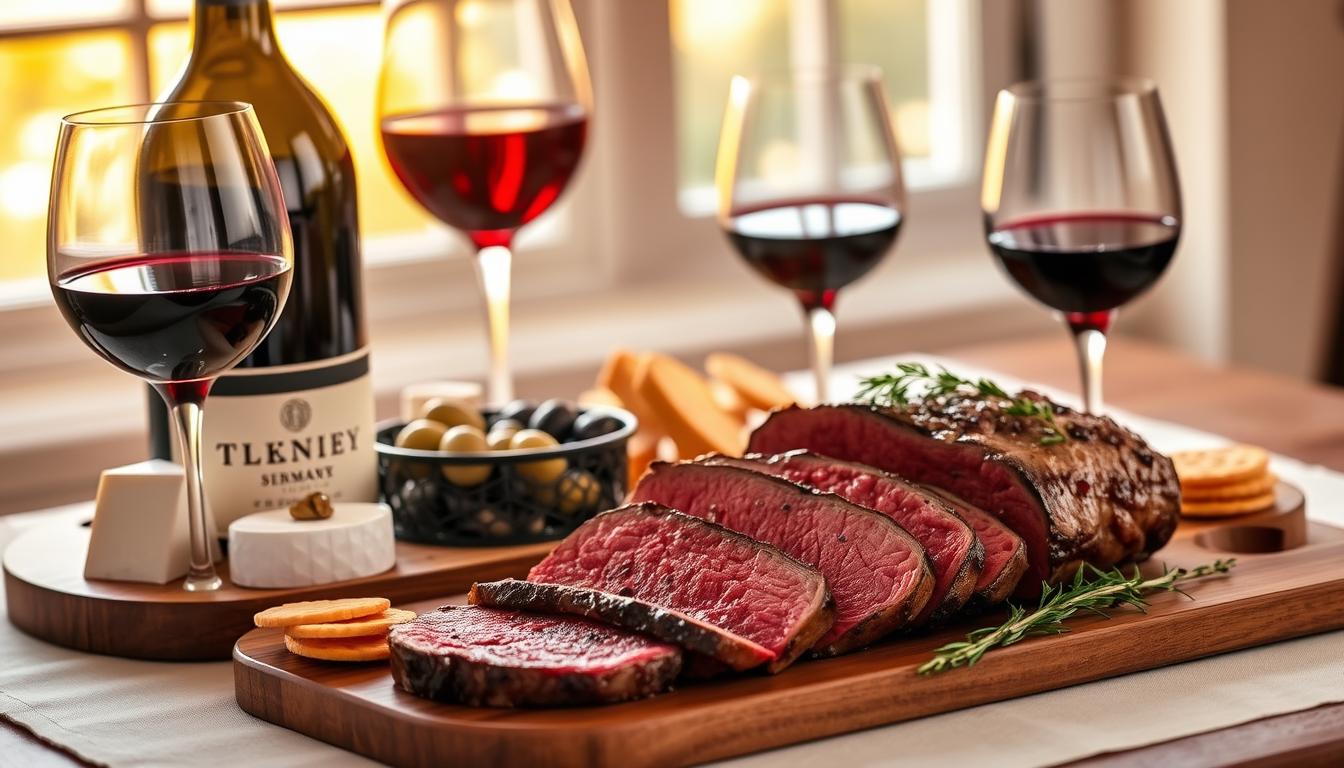
Make your Easter feast special by picking the perfect wine for your prime rib roast or beef tenderloin. The right wine can turn your meal into something unforgettable. It will make your guests happy and create a memorable dining experience.
Choosing the right wine means knowing how flavors work with your beef dishes. You want a wine that brings out the best in your prime rib roast and beef tenderloin.
Red Wine Selections for Beef Lovers
Red wines are the best match for beef dishes. Here are some top picks:
- Cabernet Sauvignon: A full-bodied wine with intense tannins that stand up to rich beef tenderloin
- Malbec: Provides a smooth, bold flavor profile perfect for prime rib roast
- Syrah/Shiraz: Offers peppery notes that complement beef’s natural flavors
“The right wine doesn’t just accompany a meal; it becomes part of the culinary experience.” – Sommelier’s Wisdom
Exploring White Wine Options
While red wines are classic, some white wines pair well with beef too. Look for fuller-bodied white wines that can match your Easter centerpiece.
- Chardonnay: Especially oaked varieties with buttery notes
- Viognier: A rich white that can stand up to lighter beef cuts
Remember, the temperature of your wine matters. Red wines are best at 60-65°F. Whites should be chilled to 50-55°F.
Pro tip: Decant your red wines for 30-45 minutes before serving to unlock their full flavor potential with your prime rib roast or beef tenderloin.
Essential Side Dishes for Easter Beef
To make your standing rib roast or rack of lamb stand out, choose side dishes that match and boost your main dish. The right sides can turn your Easter dinner into a memorable event.
When planning your Easter feast, think about these tasty side dish categories:
- Roasted Vegetable Medley: Seasonal veggies roasted with herbs add color and nutrition to your beef centerpiece
- Potato Perfection: Creamy mashed potatoes or crispy roasted potatoes go great with standing rib roast
- Fresh Spring Salads: Light, crisp salads balance the richness of rack of lamb
From beefsalami.com, we suggest these flavorful side dish ideas to complement your Easter beef. Look for a mix of textures and tastes that highlight your main protein.
Pro tip: Make side dishes ahead of time to ease kitchen stress. This way, everything will be ready at once, making your guests happy.
The secret to a memorable Easter meal lies in thoughtful side dish selection that elevates your beef centerpiece.
Tips for Hosting a Memorable Easter Beef Dinner
Planning an extraordinary Easter feast needs careful thought, especially with beef cuts for easter. Your holiday meal can become a cherished memory with the right hosting techniques. These can make your dinner unforgettable.
Successful holiday entertaining means paying attention to every detail. Whether it’s a crown roast of pork or a classic beef roast, the right approach makes your meal unforgettable.
Elegant Table Setting Strategies
Create a stunning tablescape that complements your beef cuts for easter with these professional tips:
- Select a color palette that reflects spring’s vibrant tones
- Use crisp, white linens as a classic base
- Incorporate seasonal floral centerpieces
- Arrange place settings with coordinated dinnerware
Precise Timing and Planning Guide
Smooth execution needs strategic planning. Start preparing your main course at least one day in advance. This reduces stress and ensures perfect timing.
- Thaw meats safely in refrigerator
- Prep side dishes day before
- Set table night prior to event
- Create detailed cooking timeline
Expert Serving Suggestions
Presentation makes a good meal exceptional. When serving your crown roast of pork or beef centerpiece, consider these professional recommendations:
- Carve meats tableside for dramatic effect
- Use warmed serving platters
- Garnish with fresh herbs
- Provide multiple sauce options
Pro tip: Always let your meat rest before carving to retain maximum juiciness and flavor.
Storage and Leftover Management
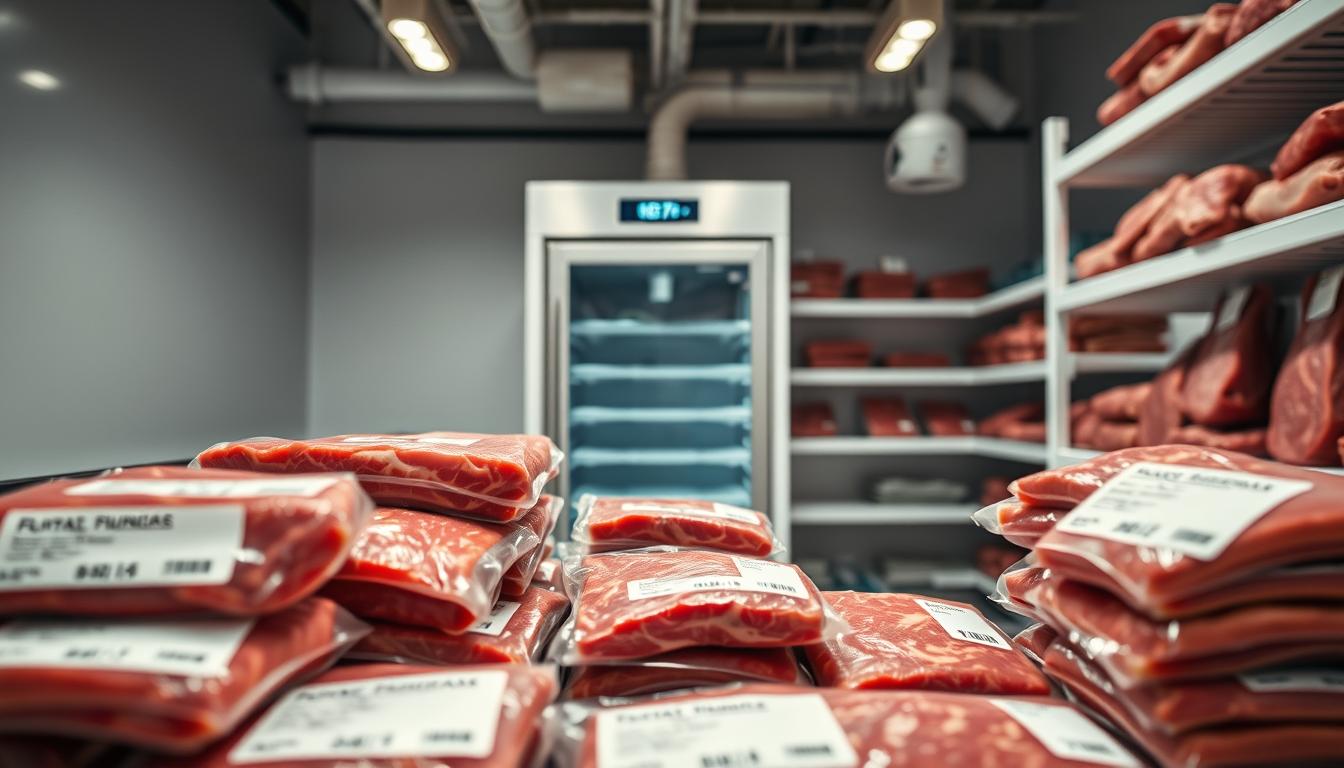
After your Easter feast, it’s important to store your prime rib roast and other meats right. This keeps them safe and tasty for later. Experts say to follow certain rules to keep your leftovers in top shape.
When you store your prime rib roast or spiral-sliced ham, think about temperature and packaging. Put leftover meats in the fridge within two hours to stop bacteria from growing. Use containers or bags that keep air out to keep them fresh.
- Refrigerate prime rib roast for 3-4 days maximum
- Freeze spiral-sliced ham for up to two months
- Always label containers with the date of storage
- Cool meats completely before refrigerating
There are many ways to use leftover Easter meats. You can make sandwiches with cold prime rib roast, add diced ham to omelets, or make big salads with leftover meat.
Pro tip: Slice meats thinly and store in portion-sized containers for easy reheating and meal prep.
| Meat Type | Refrigerator Storage | Freezer Storage |
|---|---|---|
| Prime Rib Roast | 3-4 days | 4-6 months |
| Spiral-Sliced Ham | 3-5 days | 1-2 months |
Beefsalami.com says the right storage keeps your Easter meats fresh longer. Remember, when in doubt, throw it out!
Budget Planning for Easter Beef Purchases
Planning your Easter meal doesn’t have to be expensive. You can enjoy a tasty beef tenderloin or lamb shoulder without spending too much. Knowing how to shop smart and understanding price changes can help you have a great holiday feast without breaking the bank.
Your Easter meat budget depends on a few important things. Different cuts have different prices, giving you options for any budget.
Smart Shopping Strategies
- Compare prices across multiple grocery stores
- Look for bulk purchase discounts
- Consider less expensive cuts like lamb shoulder
- Check for seasonal promotions
Price Comparison Guide
| Meat Cut | Average Price per Pound | Serving Size |
|---|---|---|
| Beef Tenderloin | $25-$35 | 6-8 ounces |
| Lamb Shoulder | $8-$15 | 4-6 ounces |
| Prime Rib | $18-$25 | 8-10 ounces |
Seasonal Cost Considerations
Easter meat prices change with demand. Purchasing your beef tenderloin or lamb shoulder early can help you secure better prices. Local butchers and warehouse clubs often offer better deals than regular grocery stores.
It’s important to find a balance between quality and cost. While it’s key to stay within your budget, choosing a high-quality cut will make your Easter dinner unforgettable.
Common Easter Beef Cooking Mistakes to Avoid
Getting the perfect standing rib roast or pork loin roast for Easter can be tough. Chefs from beefsalami.com share key tips to dodge common mistakes that could mess up your holiday meal.
Managing temperature is key when cooking beef. Many home cooks forget to use a reliable meat thermometer. This leads to overcooked or undercooked dishes. Your standing rib roast needs precision!
- Never guess the internal temperature
- Always use a digital meat thermometer
- Rest meat for 15-20 minutes after cooking
Seasoning is another area where many cooks go wrong. Underseasoning can make even the most expensive cut taste bland. A pro tip: Salt your pork loin roast well and let it sit for an hour before cooking. This helps the flavors penetrate deeper.
“The difference between a good and great Easter roast is often in the details.” – Chef Michael Roberts
Common mistakes to avoid include:
- Cooking meat straight from the refrigerator
- Not patting meat dry before seasoning
- Opening the oven door too frequently
- Cutting into meat immediately after cooking
By learning these important techniques, you’ll make your Easter beef truly special.
Special Dietary Considerations for Easter Meals

Planning an Easter dinner for different diets can be tough. Your menu should be flexible to meet various needs. It’s all about making sure everyone feels welcome.
Guests with special diets appreciate when you plan ahead. Offer a mix of proteins like beef roast and lamb. This adds variety and makes everyone happy.
- Low-Carb and Keto-Friendly Options:
- Choose fatty beef cuts with minimal marinades
- Serve with low-carb vegetable sides
- Avoid sugary glazes or high-carb accompaniments
- Paleo Diet Considerations:
- Select grass-fed beef cuts
- Use simple, natural seasonings
- Focus on whole food preparations
Pro tip: Always communicate with your guests about their dietary needs in advance to ensure a stress-free meal preparation.
| Dietary Preference | Recommended Beef Cuts | Preparation Suggestion |
|---|---|---|
| Low-Carb | Prime Rib | Roasted with herbs, no sugary glaze |
| Keto | Ribeye | Grilled with butter and garlic |
| Paleo | Grass-fed Sirloin | Simple salt and pepper seasoning |
“Dietary diversity doesn’t mean compromising on flavor or tradition.” – Chef Michael Roberts
Offering alternatives like lamb can help guests with specific diets. Your goal is to make a delicious, inclusive Easter meal for everyone.
Conclusion
Choosing the right beef cuts for Easter can make your holiday meal unforgettable. Prime rib roast and beef tenderloin are top picks that will wow your guests. They make your Easter celebration special and memorable.
Exploring different beef cuts lets you mix tradition with new ideas. Whether you choose a classic prime rib or a tenderloin, knowing each cut’s special traits is key. Budget, cooking methods, and serving tips all matter for a great Easter meal.
For more tips and advice on beef, beefsalami.com is your go-to site. It helps with selecting, preparing, and serving beef for any occasion. Learning about quality ingredients and cooking techniques is the first step to becoming a skilled home chef.
When planning your Easter feast, think about combining careful prep, quality ingredients, and personal touch. Let your beef cuts shine in a celebration that brings everyone together. It’s a chance to make lasting memories at the dinner table.
FAQ
What are the best beef cuts for Easter dinner?
Top picks for Easter beef are prime rib roast, beef tenderloin, and standing rib roast. Each offers unique flavors and textures. Choose from these premium cuts to make your Easter meal unforgettable.
How much beef should I buy per person for Easter?
Plan for 1/2 to 3/4 pound of meat per person. For prime rib, buy about 1 pound per person to account for the bone. Adjust the amount based on side dishes and preferences.
What’s the difference between prime rib and standing rib roast?
Prime rib and standing rib roast are often confused. Standing rib roast has bones, allowing it to “stand” while roasting. Prime rib is the highest meat grade, but people often use the terms interchangeably.
How do I choose the right grade of beef for Easter?
Choose USDA Prime or USDA Choice for quality. Prime has more marbling and tenderness. Choice is more affordable but still excellent. Pick based on budget and taste.
What are some alternative meat options if beef isn’t preferred?
Consider leg of lamb, spiral-sliced ham, rack of lamb, and crown roast of pork. These options add variety and cater to different tastes while keeping the Easter tradition.
How far in advance should I purchase my Easter beef?
Buy fresh beef 1-2 days before Easter. Frozen beef needs 24 hours for every 4-5 pounds to thaw safely. Check with your butcher or beefsalami.com for specific advice.
What’s the best way to cook a prime rib roast?
Bring the roast to room temperature and season well. Roast at 450°F for browning, then at 325°F until it’s done. Use a thermometer and let it rest for 15-20 minutes before carving.
How can I accommodate guests with dietary restrictions?
Offer lamb or ham alongside beef for guests. Prepare gluten-free, low-carb, or keto dishes. Provide a variety of sides to meet different dietary needs, ensuring everyone has something delicious.
What are some budget-friendly beef options for Easter?
Opt for beef tenderloin roasts or smaller cuts for savings. Look for sales and ask for recommendations. A smaller, high-quality cut can be more affordable than a larger one.
How should I store leftover Easter beef?
Store leftover beef in airtight containers in the fridge for 3-4 days. Freeze cooked beef for up to 2-3 months. Cool the meat completely before storing and reheat thoroughly before serving.
